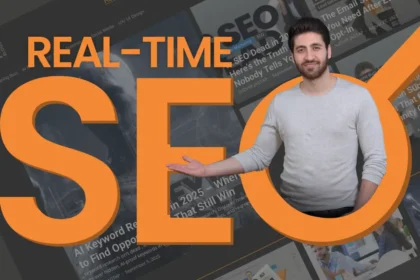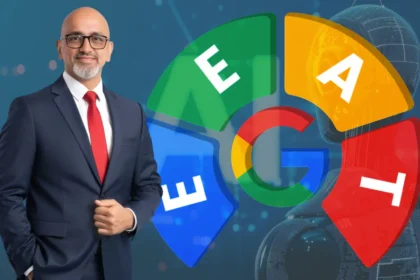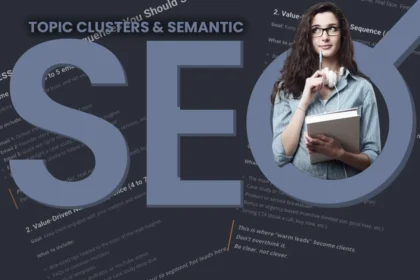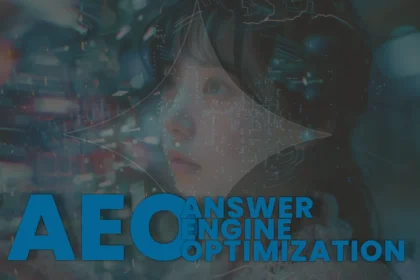Landing page copywriting is more than just putting words on a screen , it’s about using the right words to get the right people to take the right action. Whether you’re asking users to sign up, download, or buy, your landing page copy can make or break conversions. In this post, we’ll explore how to write copy that speaks directly to your audience’s needs and persuades them to act, even if they just skim.
1. Start with a Clear and Bold Value Proposition
Your value proposition is the first thing visitors should understand. It answers:
- What are you offering?
- Who is it for?
- Why is it better or different?
Make it clear, not clever
Use language that a 12-year-old can understand. Clarity beats creativity when it comes to conversions.
Example (Slack):
“Slack brings the team together, wherever you are.”
Structure of a strong value proposition
- Headline: Clear benefit (e.g., “Get More Sales Without More Ad Spend”)
- Subheadline: How it works or what makes it unique
- Bullet points: Specific outcomes or features
- Visual support: A graphic or mockup of your product/service
2. Craft Microcopy That Builds Trust
Microcopy refers to the short snippets of text around buttons, forms, error messages, and help text. These are small words with big impact.
What effective microcopy does:
- Reduces anxiety (“No credit card required”)
- Builds clarity (“You’ll get a free PDF, no spam”)
- Encourages honesty (“We’ll never share your email”)
Example for a form CTA:
“Start Free Trial — No Credit Card Required”
Avoid:
- Vague button labels like “Submit” or “Click Here”
- Unclear form field labels
- Long or complex error messages
3. Write for Skimmers, Not Readers
People don’t read landing pages, they scan them.
How to write for skimmers:
- Use short paragraphs (2–3 lines max)
- Write with subheadings every 2–3 sections
- Use bolding, bullet points, and icons to highlight key messages
- Break long text into digestible chunks with visual hierarchy
Tip:
Structure your page like an inverted pyramid, most important info at the top.
4. Use Psychological Triggers That Nudge Action
The best landing page copywriting taps into basic human psychology.
Use these persuasion principles ethically and with empathy:
a. Scarcity & Urgency
“Only 12 spots left this month.”
“Offer ends at midnight.”
b. Social Proof
“Join 20,000+ professionals already using our tool.”
c. Clarity of Outcome
“Learn how to grow your audience 5x in 90 days.”
d. Loss Aversion
“Don’t leave conversions on the table.”
e.Emotional Triggers
- Frustration: “Tired of losing leads?”
- Aspiration: “Turn visitors into raving fans.”
5. Nail the CTA (Call to Action)
Your CTA is the climax of your landing page copy. Make sure it’s specific, action-oriented, and benefit-driven.
Formula:
Action Verb + Specific Benefit
“Download the Guide” → too vague
“Get Your Free Guide to Doubling Leads” → clear benefit
Good CTA Examples:
- “Book My Free UX Audit”
- “Start Building My First Funnel”
- “Show Me How to Increase Signups”
Place CTAs:
- Above the fold
- After each section
- As a sticky button on mobile
Real-World Example: Dropbox
Headline: “Everything you need for work, all in one place.”
Subheadline: “Dropbox Business is more than secure storage, it’s a smart workspace.”
CTA: “Try for free”
Microcopy: “No credit card required”
Dropbox’s copy is clear, emotionally resonant, and answers “What’s in it for me?” within seconds.
Related Blogs: Landing Page Series
- What Is a Landing Page? And Why It’s Essential for Your Marketing Funnel
- Anatomy of High Converting Landing Page
- Designing for Conversion – UX/UI Best Practices for Landing Pages
- Words That Convert, Crafting Powerful Copy for Landing Pages
- From Visitors to Leads: Lead Magnets for Creating Irresistible Offers for Your Landing Pages
- Lead Capture Forms: What to Ask, What to Avoid for Better Conversions
- A/B Testing Your Landing Pages: What, Why, and How to Optimize
- What Happens After the Click? Integrating landing pages with CRM
- Driving Traffic to Landing Pages: SEO, Ads, and Social Media Tactics
- Landing Page Mistakes to Avoid in 2025 (+ Future Trends in Lead Gen)
Final Thoughts
Great landing page copywriting guides users toward a decision — without sounding pushy or generic. By focusing on clarity, emotional connection, and persuasion psychology, you create an experience that feels personal and purposeful.
Want Copy That Converts?
Partner with DzynBuzz to write landing page copy that drives leads and builds trust.













